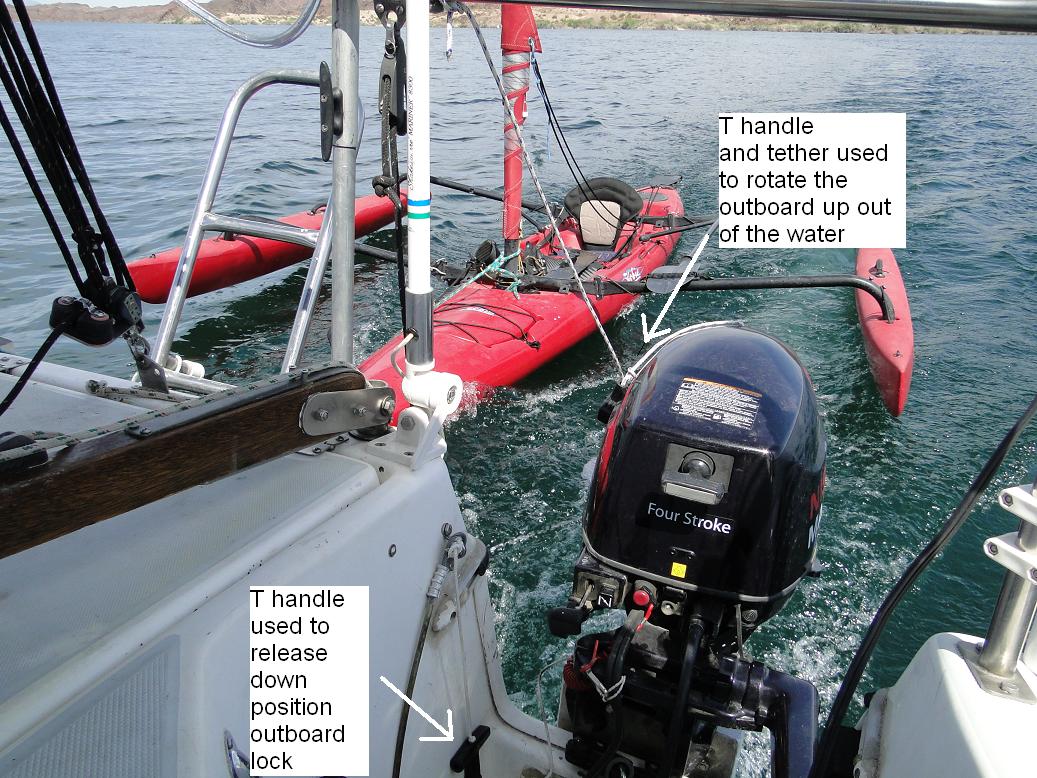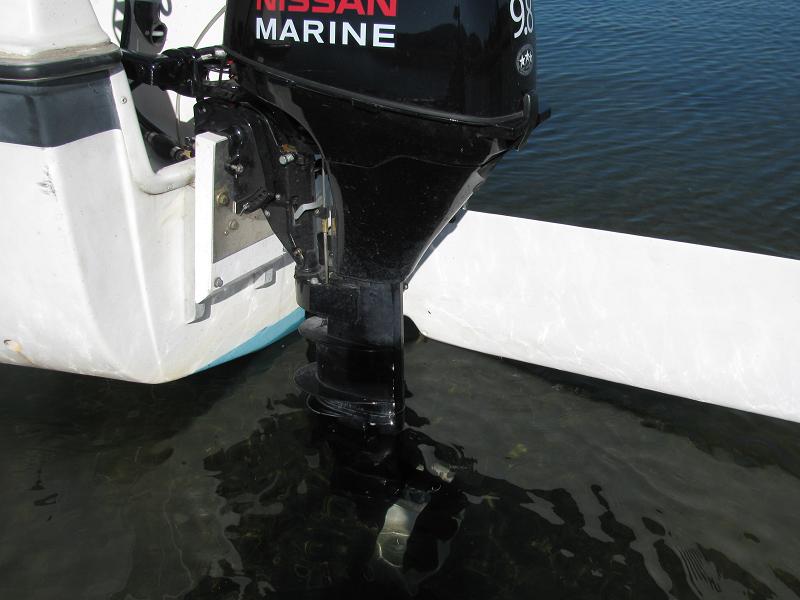
On the 1990 Mac 26S, the Tohatsu / Nissan 8 to 9.8 hp outboard wont fully rotate on the transom. To make the outboard fully rotate, an extra long shaft outboard was used along with a transom riser that moves the outboard up by 2.5 inches and back just a little over 2 inches.
This allows the outboard to fully rotate and also puts the prop 2.5 inches lower than the standard long shaft. I've also towed this boat thousands of miles now with the outboard on the transom shown in these pictures.
Note: being able to fully rotate the outboard is not needed for normal motoring but it does make the boat much more maneuverable especially at slow speeds where the rudder isn't generating much lift to steer the boat..

Weight is kept as low as possibly by the use of Aluminum channel. The wood block is made for several sheets of plywood that have been epoxied together. For extra strength without adding much weight, a sheet of aluminum was used on both sides of the wood block.
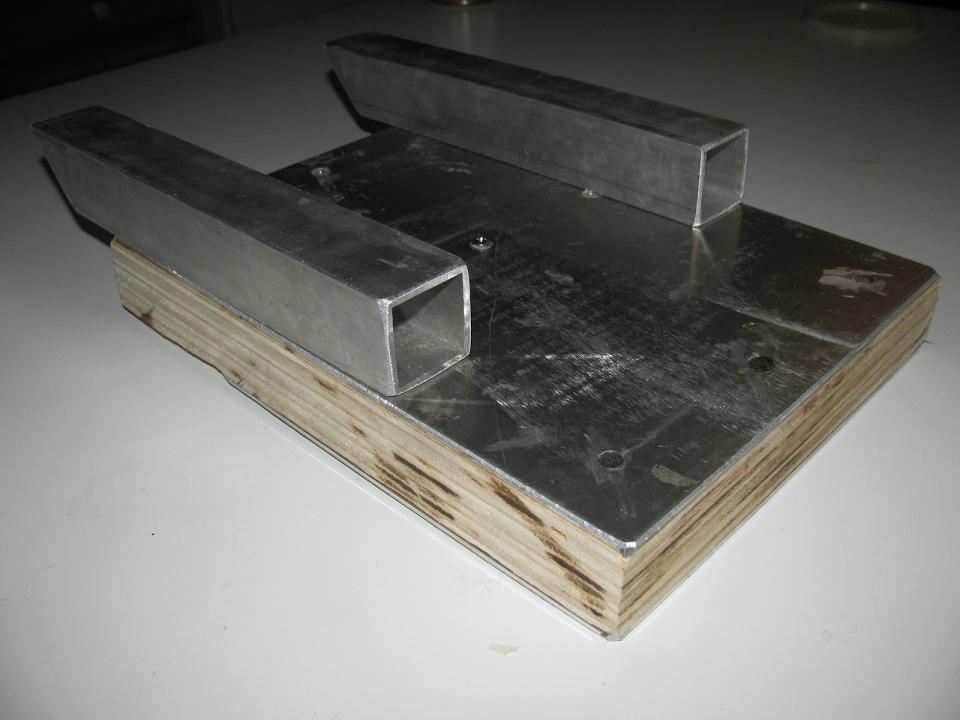
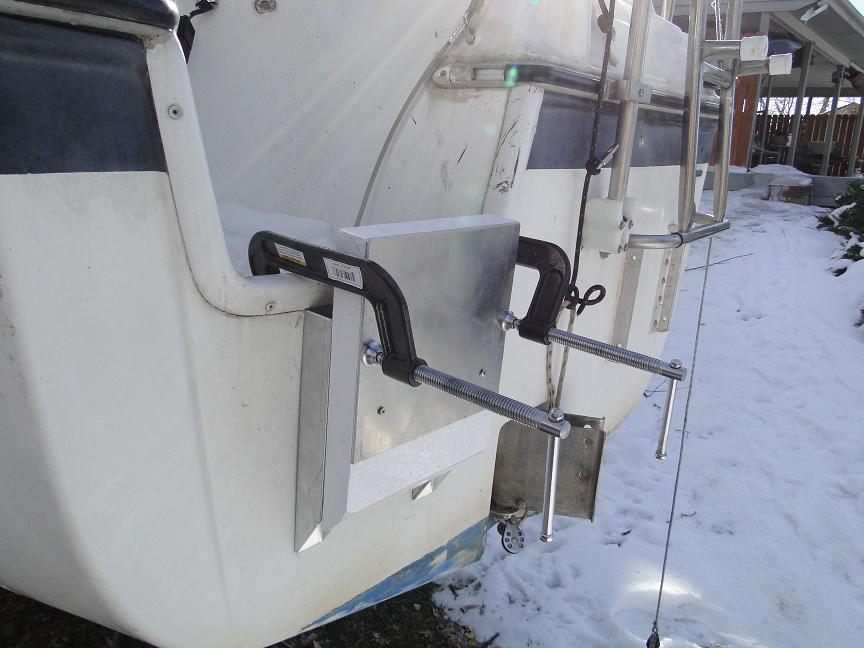
Dimensions shown below - the outboard mount is moved back by about 2.25 inch
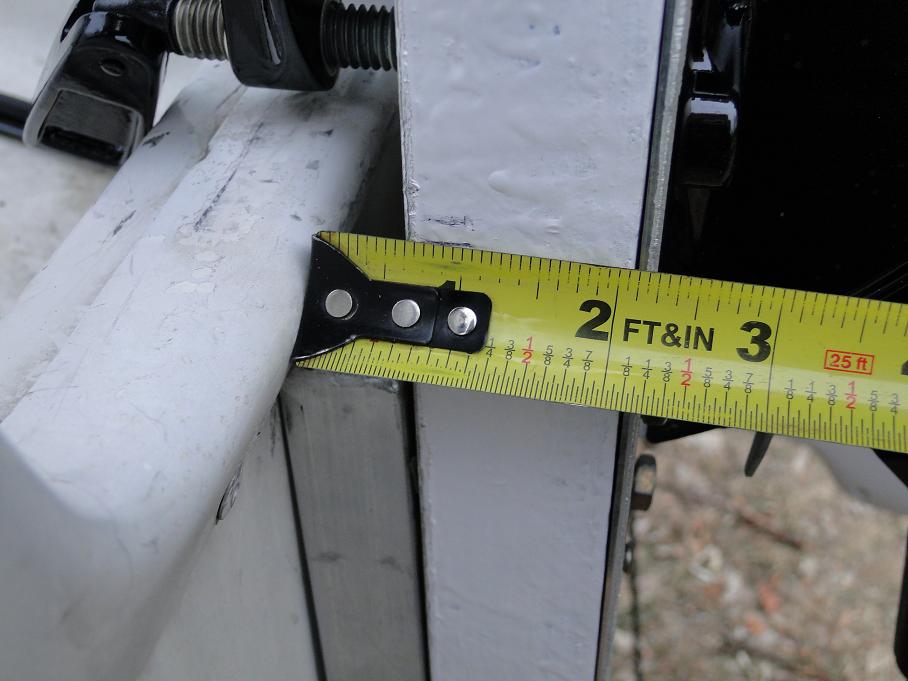
Riser is bolted on with grade 8 and stainless 3/8 bolts and 5/16 bolts.

Backing plates on the inside of the well (and I plumbed a new drain hole for the transom well and plugged stock drain hole)
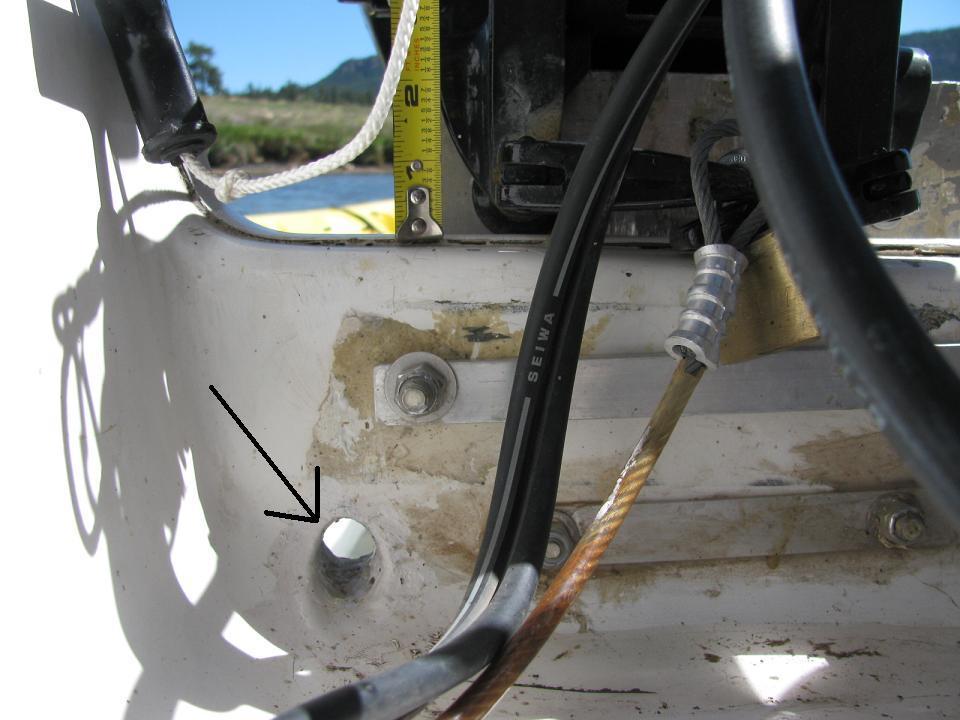
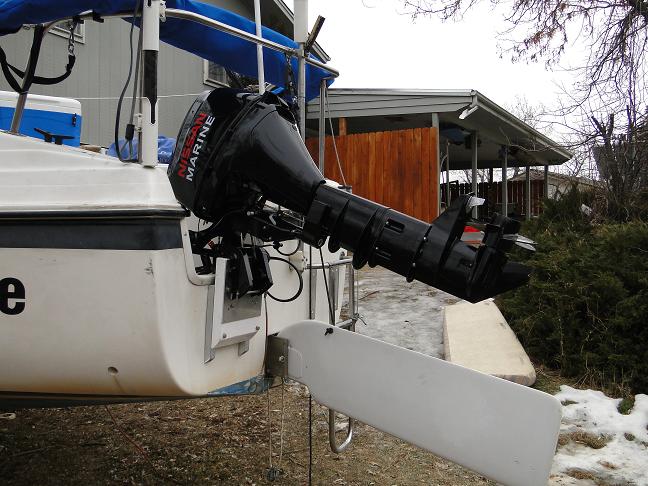
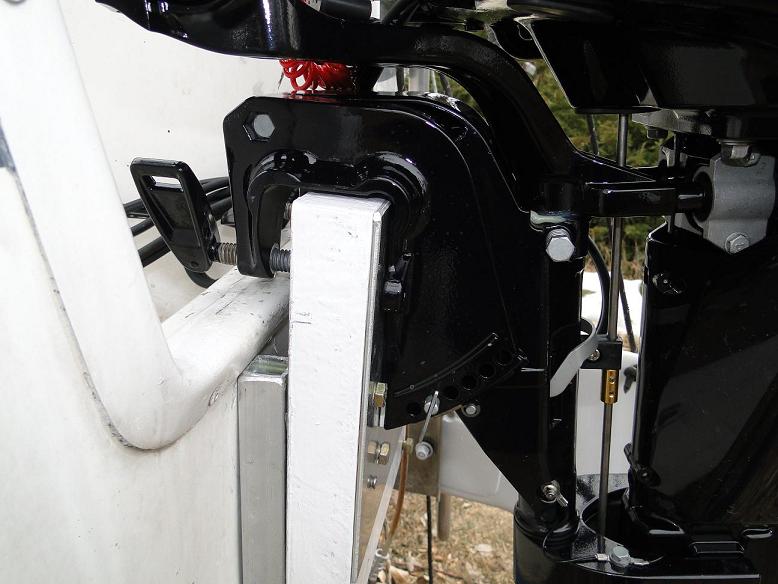
Outboard can fully rotate on the transom
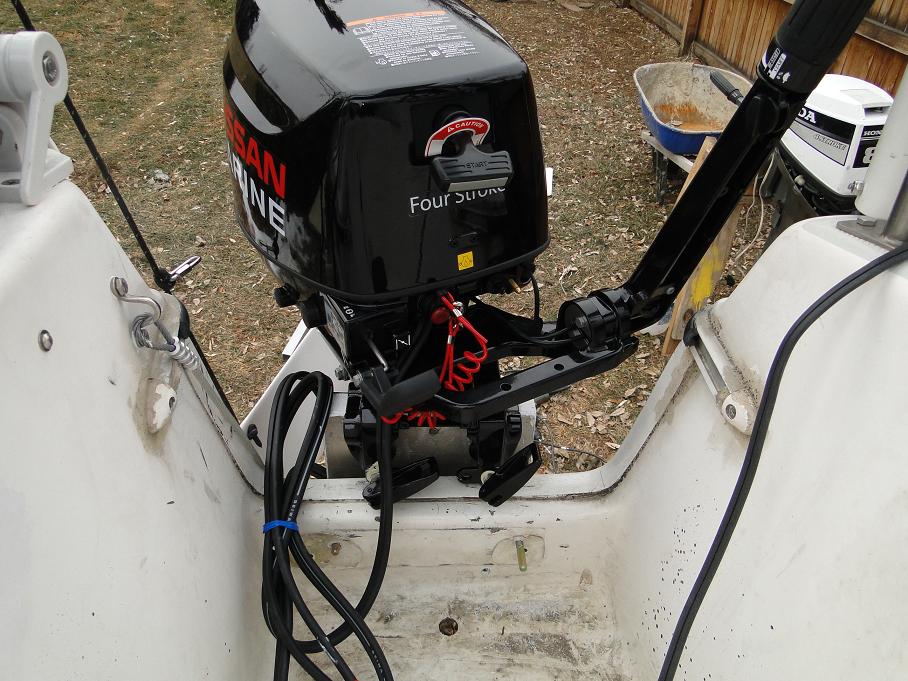

Extra long shaft raised up 2.5 inches still puts the prop 2.5 inches lower than the standard long shaft on the stock transom.
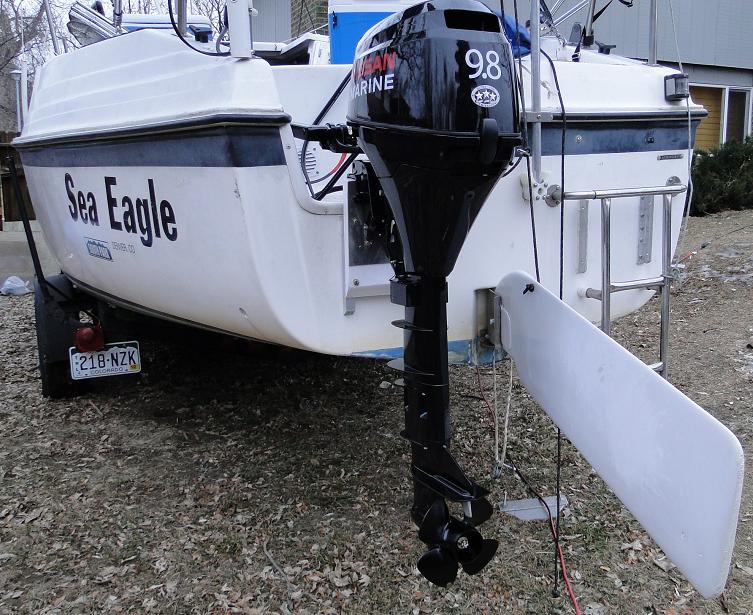
If the rudder ground and folds back to this angle, it can contact the prop. However, when the rudder is fully down, it can be fully rotated as well as the outboard full rotated and there is no possibility of the rudder contacting the prop. Its only when the rudder is folded back.
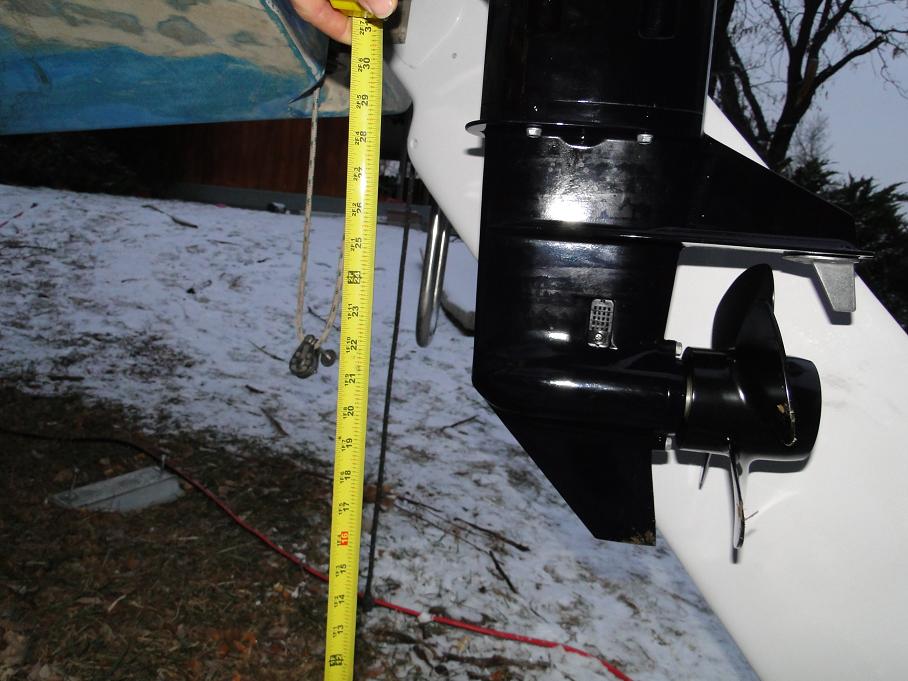
A prop guard insures that the rudder can not come in contact with the prop. However, the stainless steel ring bolted to the outboard will accelerate the outboard zinc loss as this makes a galvanic corrosion circuit. So the prop is not left in the water for long periods.
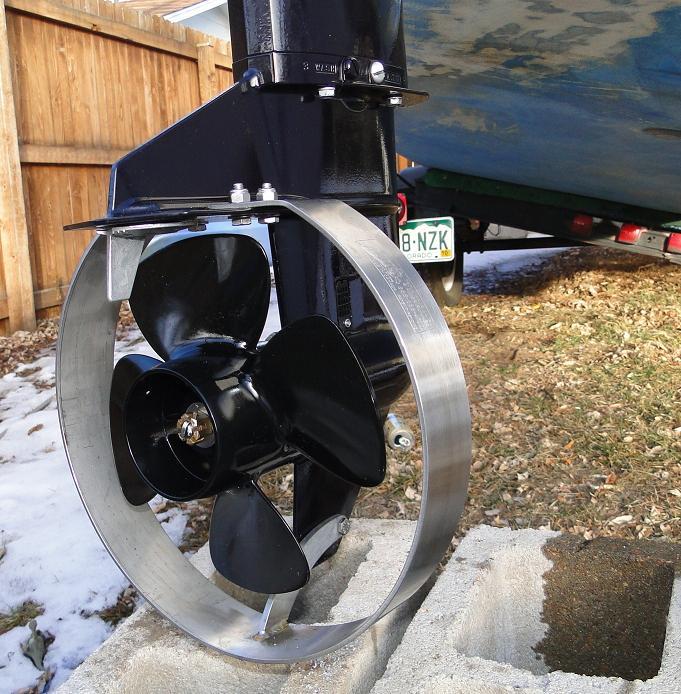
Some shots of the motor (this one is electric start)

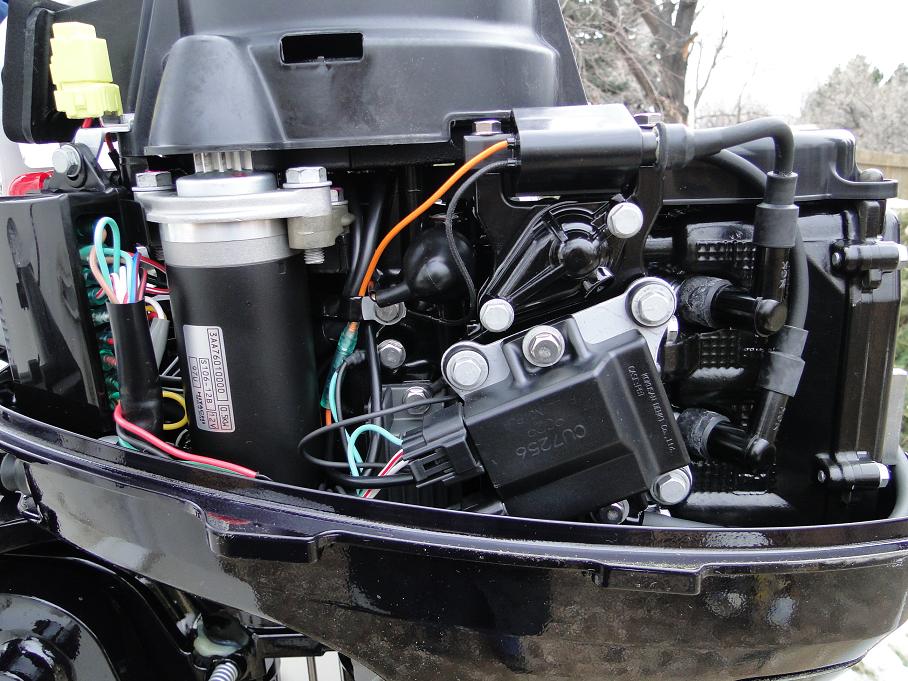

Props on this outboard I've tried:
The prop on the left is a 8.5 pitch three blade and the prop on the right is a four blade 5 pitch and is what came with the outboard.
The four blade "high thrust" prop allows the outboard to rev higher and get to its full rated hp. Also, the symmetrical blades and larger exhaust hub make the four blade prop work MUCH better in reverse.
After using the 5 pitch four blade for a while, I didn't like how high of rpm's were always required for normal motoring so I bought the three blade 8.5 pitch. In forward where the swept back blades are optimized, the prop seems more efficient and also the higher pitch runs the outboard at a lower rpm for less noise and vibration. It works OK for reverse and has been adequate and it is what has been on the boat for the last few years. I overall like this prop on the 26S.
I have not tried this prop but the 7 pitch four blade likely is also a good choice for this outboard on the Mac as it will run a lower rpm so less noise and vibration but will still have a very good reverse.. You might give up a little efficiency in forward but you probably have to motor for a long ways to even measure the difference. Most people might prefer the 7 pitch four blade. With this light of boat, the three blade has worked well enough that I haven't bothered changing anything.


Outboard charging system notes
Although the Nissan 9.8
uses a Magneto similar to most smaller outboards, it behaves much more like
alternator/regulator setup. I.e., this outboard will put out near the full
specified amps even at low RPM and it will not over charge the battery even at
high RPM. It also does NOT do this by burning off excess charge in heat which is
a good thing.
Suspecting the Nissan 9.8
four stroke charging system actually worked much better than what you hear on
the internet for a small outboard, I kept some records of what it did
during a week of living on and sailing the boat. For these numbers, I used a
battery charge monitor to measure voltage, current, and amp hours. My battery is
composed of two six volt golf cart batteries.
When I first put the boat
in the water, the battery was fully charged (by a solar panel/charge
controller), I ran the outboard immediately to see if the regulator was limiting
current when the battery was fully charged. Battery voltage was about 13.7 volts
and the current from the outboard was 0.3 amps at about ½ throttle and 0.4 amps
at full throttle. Conclusion - the regulation works fairly well and limits
output when the battery is full.
Another data point. A few
days later the battery was down about 18 amp hours. I just started the outboard and let it
idle. The battery voltage was 12.9 volts and the current from the outboard was
4.5 amps. I.e., even at idle, I was getting 4.5 amps from the outboard! Under
the same conditions, it would put out near the rated current at mid to full
throttle. I.e., there was not much RPM dependence on current, the charging
system was putting out near full current over the entire range.
I also found that the
regulator starts to kick in and limit current at about 13.3 to 13.4 volts and when it did, the
charging current would jump between a higher and a lower value. I’m not sure
exactly where the outboard regulator really cuts back on charging but suspect
it’s about 13.5 to 13.6 volts.
The only thing I don't like about this regulator is that it limits current at too low of voltage (i.e., around 13.5 volts). On the week I used the boat, I rarely got the battery down below 15% from full and this resulted in the regulator limiting current for a lot of the motoring I did. If I would have run the battery down past 15%, the outboard regulator limiting would likely have not kicked in and I would have got more out of the charger.
Other details
A couple of T handles and tethers were added that make it a lot easier to rotate the outboard up out of the water for sailing mode.
